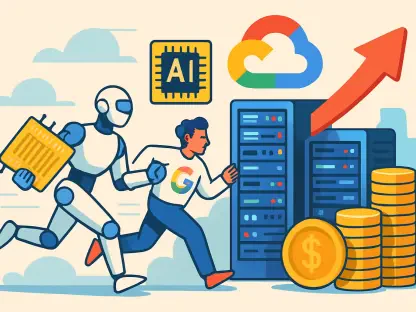In an era where artificial intelligence (AI) seamlessly weaves into the fabric of daily life, understanding the terms defining this technology’s framework becomes increasingly vital. The language of AI encapsulates a spectrum of innovative concepts reshaping industries, rethinking ethics, and redefining societal norms. This article delves into the key AI terminologies instrumental in deciphering how AI technologies influence everything from mundane tasks to complex decision-making processes. As policy-makers, technology enthusiasts, and everyday users navigate this rapidly evolving field, a comprehensive grasp of these terms will prove indispensable for leveraging AI’s full potential while mitigating associated risks.
Defining AI: Beyond the Basics
Artificial Intelligence and Its Types
The term “artificial intelligence” often conjures images of autonomous robots and intelligent systems capable of performing tasks typically requiring human intelligence. However, AI’s scope goes beyond mere automation. The AI landscape is primarily categorized into two types: Narrow AI and Artificial General Intelligence (AGI). Narrow AI, also known as weak AI, is designed to perform specific tasks such as language translation or driving a car under controlled conditions. It is currently the most prevalent form of AI, utilized in applications ranging from personal assistants to recommendation algorithms.
In contrast, AGI represents a paradigm where machines possess the ability to comprehend, learn, and apply knowledge across varied domains, similar to human cognition. Although AGI remains largely theoretical, its possibility raises intriguing questions about the future dynamics of human-machine interaction. The potential for AGI to surpass human intelligence could lead to unprecedented advancements but also poses ethical and existential challenges that demand thoughtful exploration and regulation.
Machine Learning and Deep Learning
Machine Learning (ML) is a cornerstone of AI, enabling systems to improve their performance with experience. Algorithms are trained on large datasets to recognize patterns and make decisions with minimal human intervention. Within this realm, supervised, unsupervised, and reinforcement learning are prominent paradigms guiding different approaches to learning and adaptation. Supervised learning involves training a model with labeled data, whereas unsupervised learning intuitively finds patterns without predefined labels. Reinforcement learning revolves around models that learn through trial and error, receiving rewards or penalties based on their actions.
Meanwhile, deep learning, a subset of ML, utilizes neural networks with multiple layers to analyze complex data inputs. This technique has excelled in fields such as image and speech recognition, where conventional algorithms fall short. Deep learning algorithms mimic the intricate workings of the human brain, enabling AI to understand and categorize data with high levels of abstraction. Understanding these terms provides clarity in how AI systems evolve and process information, laying the groundwork for future innovations.
The Core Components of AI Technology
Neural Networks and Algorithms
The concept of neural networks is pivotal to grasping how AI systems function. Neural networks are computational models inspired by the human brain’s interconnected neurons. These networks consist of layers of nodes, or “neurons,” each capable of recognizing and transmitting patterns through weighted connections. These layers work in harmony to progressively refine data inputs, allowing AI systems to make informed predictions and decisions. Deep neural networks, in particular, employ multiple hidden layers to tackle complex tasks like facial recognition or autonomous driving.
Algorithms, on the other hand, serve as the procedural backbone for various AI operations. They guide the decision-making processes, enabling AI systems to execute tasks efficiently. Different algorithms are tailored to specific needs: decision tree algorithms facilitate sorting and classification tasks, while gradient descent aids in optimizing model parameters in deep learning. Together, neural networks and algorithms constitute the essential building blocks that empower AI technologies to function and evolve.
Natural Language Processing and Computer Vision
Natural Language Processing (NLP) and Computer Vision are specialized AI domains focusing on understanding and interpreting human language and visual data, respectively. NLP equips machines with the ability to comprehend and generate human language, underpinning applications like chatbots, language translation services, and sentiment analysis tools. These processes rely on sophisticated algorithms that parse, analyze, and generate responses in conversational contexts.
Similarly, Computer Vision empowers AI systems to process and interpret visual information from the world. Using image processing techniques and neural networks, these systems can identify objects, track motion, and even recognize emotional states through facial expressions. As these domains advance, they enable AI to interact with the world in increasingly human-like manners, breaching barriers between machine capabilities and human experiences.
Emerging Trends in AI Implementation
Autonomous Systems and AI Ethics
Autonomous systems represent a significant stride in AI, encompassing technologies ranging from self-driving vehicles to robotic process automation in manufacturing. Leveraging AI’s potential to perform tasks independently leads to greater efficiency and innovation, fundamentally shifting industries toward smarter, more adaptable operations. The notion of autonomy, however, transcends mere technical capability and extends into questions of accountability and safety.
AI ethics, therefore, becomes an indispensable field of study, exploring the moral dimensions of deploying such powerful technologies. As autonomous systems gain prominence, researchers and policymakers grapple with establishing frameworks that ensure these systems operate fairly, transparently, and without ingrained biases. Through ethical oversight, potential dangers—such as privacy invasion or unjust algorithmic decisions—can be systematically addressed and mitigated.
AI’s Role in Economic Transformation
AI is a catalyst for economic transformation, enabling unprecedented efficiencies and creating new business models. From automating routine tasks to enhancing decision-making with predictive analytics, AI’s adoption across industries is set to generate billions in corporate value. Financial services, healthcare, and supply chain management are among sectors reaping the benefits from AI’s analytical capabilities, which streamline operations and foster data-driven strategies.
Notably, AI introduces shifts in labor markets as well. While it can lead to job displacement in specific manual roles, it simultaneously spurs opportunities in AI innovation, governance, and ethical auditing. Educating and reskilling the workforce for AI-centric roles ensures a balanced transition, allowing society to harness AI’s economic potential while addressing social impacts.
The Nuances of AI’s Influence
Bias and Hallucinations in AI Systems
Addressing bias remains a priority in AI development, as biased AI systems pose risks of perpetuating or exacerbating societal inequalities. Biases embedded within training datasets could propagate through AI algorithms, leading to misguided or inequitable outcomes. This has significant ramifications in sensitive areas such as decision-making in credit scoring or law enforcement, highlighting the need for rigorous bias assessments and interventions.
AI hallucinations, wherein models generate false or misleading information, also exemplify challenges in ensuring reliability. As AI models experiment with creative generative techniques, the thin line between innovation and erroneous outputs necessitates critical oversight. Systematic evaluation, robust data validation, and continual refinement of algorithms are crucial to mitigating hallucinations and maintaining AI’s credibility.
The Interplay of AI Safety and Human Oversight
AI safety and human oversight are paramount in maintaining control over powerful AI technologies. Ensuring AI operates predictably and aligns with human values necessitates establishing comprehensive safety protocols. These include verifying AI systems through rigorous testing, embedding fail-safe mechanisms, and instituting human intervention points to oversee AI operations.
Moreover, fostering transparency in AI development and deployment builds trust and ensures public acceptance. Open dialogue between developers, stakeholders, and users can bridge gaps and address any concerns related to AI’s implementation. Maintaining a harmonious balance between AI’s autonomous capabilities and human governance enables seamless, ethical incorporation of AI into society’s fabric.
Concluding Thoughts on AI’s Evolution
In today’s world, artificial intelligence has become an integral part of our everyday existence, making it crucial to familiarize oneself with the terminology that defines its framework. AI’s vocabulary encompasses a wide range of innovative ideas that are reshaping industries, challenging ethical standards, and modifying societal norms. This exploration focuses on key AI terminologies essential for understanding how these technologies impact everything from routine activities to intricate decision-making processes. As policy-makers, technology enthusiasts, and everyday users find their way through this rapidly progressing field, having a comprehensive understanding of these terms is necessary to fully harness AI’s potential while managing its inherent risks. Knowing the language of AI empowers professionals and individuals alike to engage with technology more effectively and responsibly. It serves as a bridge between the complexity of technological advancements and the practical applications that influence our daily lives. With AI driving transformation across various sectors, it’s more important than ever to grasp the nuances of the terms behind the tech, ensuring informed and strategic engagement that moves society forward while addressing ethical concerns and implementing safety measures.









